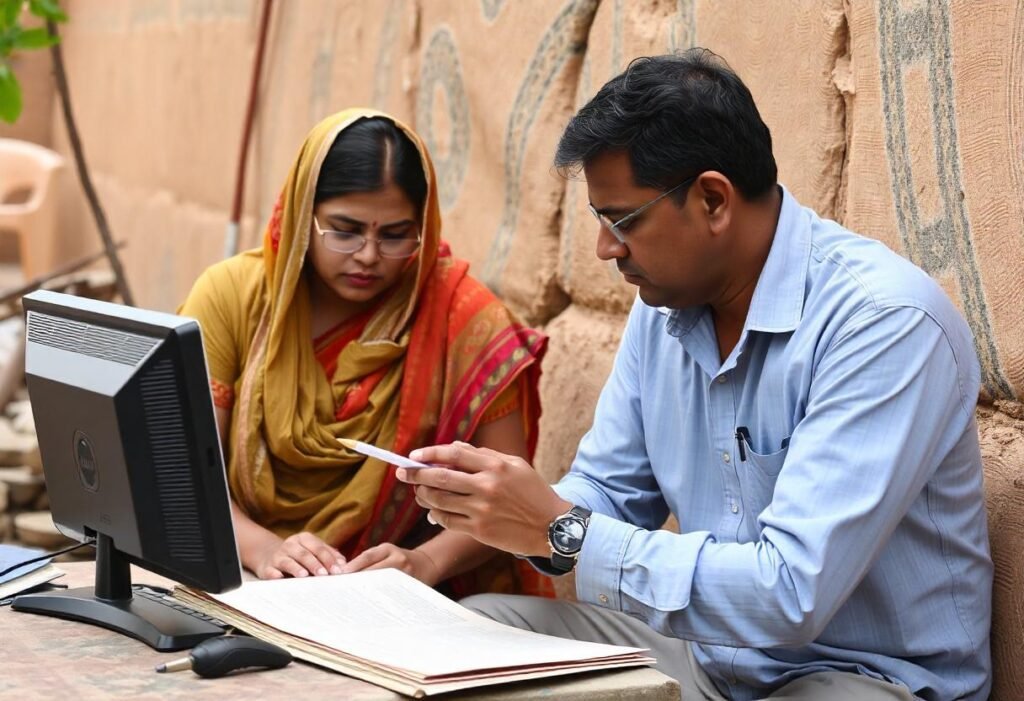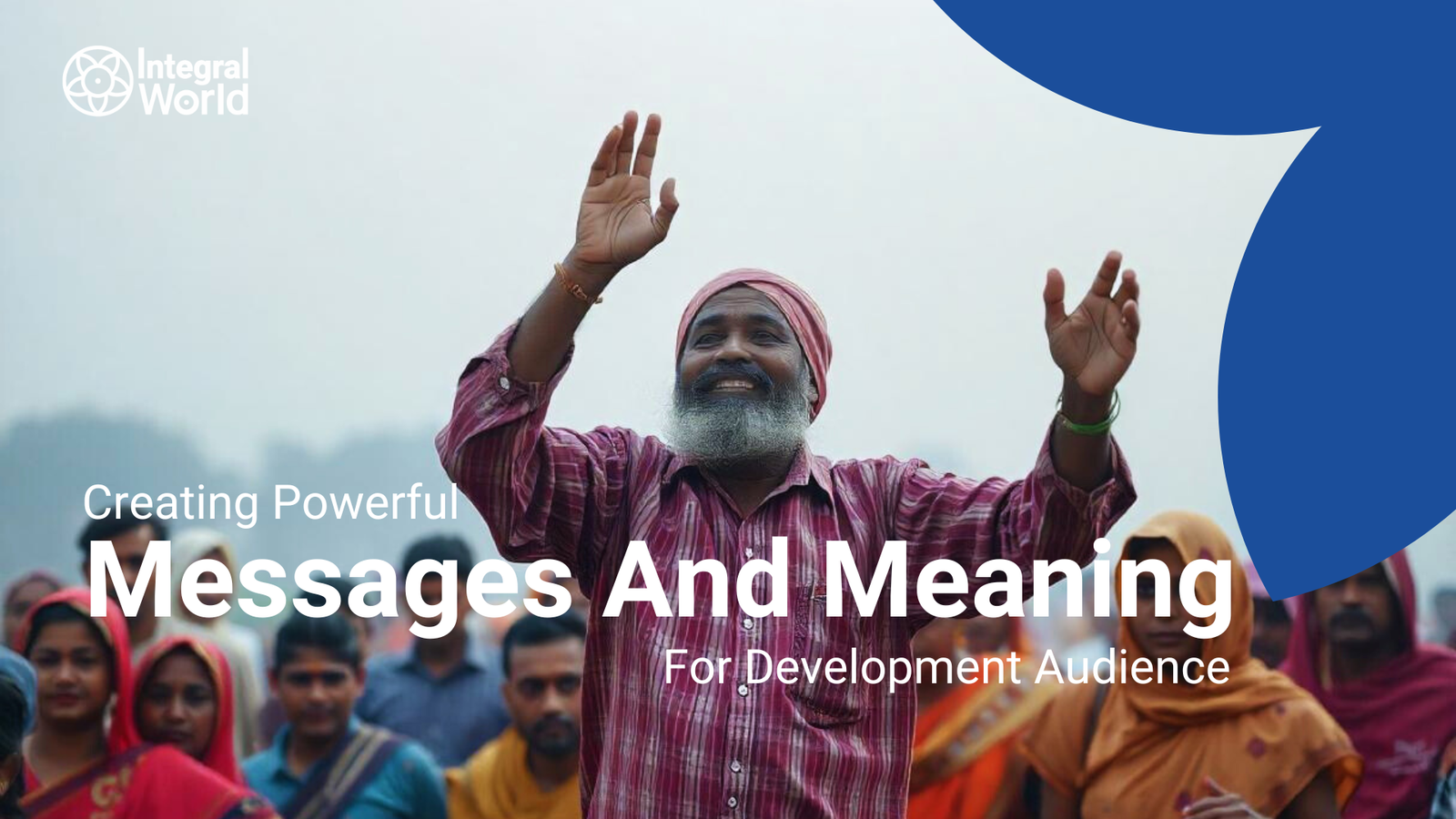In the field of development, communication is very important. Formulating strong messages that resonate with various target groups can encourage participation, foster community mobilization and eventually lead to sustainable transformations.
Integral World is an NGO committed to holistic development that has rich experience in this field. This article provides actionable approaches, real-world illustrations and expert advice on how organizations can create messages that matter for their audiences in a development context.
Knowing Your Audience
Segmenting Audience
To have effective messaging, you need to understand your audience well. In most cases, the organizations involved in development interact with diverse stakeholders who have varying needs and communication preferences. First things first: identify those groups you are going to address.
Illustration:
- Donors: Transparency, impact stories and recognition are essential in attracting them.
- Beneficiaries: They want information on services rendered made easy for them to access.
- Partners: These want goals closely aligned and collaborative opportunities.
- Volunteers: These look for meaningful jobs within their society as well as personal growth.
Conducting Audience Research
Audience research is vital for crafting relevant messages. Use surveys, interviews, focus groups, and social media analytics to collect demographic data on your audience as well as insights into their behaviors and preferences regarding your content.
Insight: Beth Kanter– Author & Non-Profit Consultant “Audience research helps shape more resonant messages that inspire action. It guides organizations through what moves their audiences and helps communicate effectively.”
Making Powerful Messages
Developing a Clear Value Proposition
A value proposition gives a brief description of what sets your organization apart from others by highlighting its unique benefits to clients or supporters. such as why people should support or engage with us?
Illustration: Charity – water says this about its value proposition; “100% of your donation brings clean water to people in need”.
Using Storytelling: For effective communication regarding complex matters storytelling creates emotional connections hence it makes difficult issues understandable. Use stories that show the impact of your work and how those you serve are affected.
Illustration: TOMS Shoes: TOMS does this by providing tales of individuals who benefit from their “One for One” model whereby a purchase helps provide shoes, glasses, water, or even safe births to those in need.
Insight: Brene Brown– Researcher & Storyteller “Stories are just data with a soul. Stories can help us see new things in life and understand other people’s pain and happiness.”
Incorporating Data and Impact Metrics
Merging storytelling with data creates an all-inclusive impression regarding your achievements. Statistics and metrics will back up your storylines hence demonstrate that what you do is effective.
Illustration: Save the Children uses both personal accounts as well as figures to present its annual reports showing children helped, improvements in education, health outcomes and much more.
Using Visuals
Visual content enhances message retention plus engagement with audiences; it includes images, infographics and videos. This makes it more attractive while enhancing understanding.
Illustration: UNICEF frequently employs captivating photos as well as videos to narrate stories about underprivileged children being catered for through their programs.
Insight: Guy Kawasaki- Marketing Specialist “Great visuals sell a good story rather than a product.”

Strategies for Engaging Development Audience
Personalization
When messages are personalized, they have greater significance to recipients. Communication must be adjusted according to the recipient’s interests, past interactions, preferences etc.
Illustration: World Wildlife Fund (WWF): WWF sends personalized emails to donors acknowledging their past contributions while giving them details on what specific purposes the donated amounts contributed towards.
Consistent and Transparent Communication
Regular transparent communication helps build trust among your audience as well as keeping them informed about any development. Openly share updates on progress made so far including failures realized if any at all.
Illustration: Charity – water posts regular updates on the progress of funded projects, including detailed reports and GPS coordinates of wells built.
Call to Action (CTA)
For turning attention into action, a powerful call to action (CTA) is crucial. Ensure your CTAs are clear, urgent, and audience-relevant.
Example: ActionAid: Contains strong CTAs like “Donate now to protect a child from violence” or “Join us in the fight for women’s rights.”
Expert Insight: According to Ann Handley, Content Marketing Expert: “The key to a great call to action is clarity and urgency”.
Real-World Examples
Integral World’s Community Engagement
Integral World has applied these strategies effectively to nurture community engagement and spur sustainable development. They know their diverse audiences well enough so they can create messages that resonate strongly with them and drive them into taking actions.
Example: Community Empowerment Workshops: Instructional sessions such as this hosted by Integral world concentrates on empowering local leaders and communities. They blend individual stories with facts about what benefit one will get for participating.
Success Story: BRAC
This masterful communication uses anecdotes laced with data that demonstrates the importance of their projects towards human life.
Impact: Education Programs: At BRAC, education programs’ campaigns also involve sharing testimonials from students and teachers together with figures showing improved literacy rates and school enrollments.
Success Story: Mercy Corps
Mercy Corps employs storytelling alongside data in engaging donors as well as stakeholders. This strategy has resulted in significant growth both in support base and actual impact.
Impact: Resilience Building: Their work focuses on how communities rise again after disasters through stories supported by data which shows increased resilience index scores plus recovery rates tend not to be high enough for such communities.

Practical Advice for Organizations
1. Invest in Audience Research
Keep updating yourself regarding the needs and preferences of your audience through regular surveys. Use this information to tailor your messages accordingly.
Tip: Use tools like Google Analytics, SurveyMonkey, and social media insights to gather data?
2. Use a Multi-Channel Approach
Engage your audience through multiple channels, including email, social media, websites, and offline events. Make sure that your messages are consistent across all platforms.
Tip: Develop a content calendar to plan and coordinate your communications across different channels?
3. Measure and Optimize
Regularly measure the effectiveness of your communications and optimize based on feedback and performance metrics. A/B testing is useful for this purpose.
Tip: Track metrics such as open rates, click-through rates, engagement levels, and conversion rates?
4. Leverage Partnerships
Work with other organizations, influencers or stakeholders to amplify your message. Partnerships can help reach new audiences and enhance credibility.
Tip: Participate in joint campaigns, events, and initiatives to broaden your reach and impact?
5. Keep Learning and Adapting
Keep yourself updated on emerging trends and best practices in communication and engagement for non-profit organizations. Continually learn from experience so that you will always remain relevant.
Tip: Attend workshops, webinars, and conferences related to non-profit communication & marketing.
Conclusion
Developing strong messages for development-oriented audiences requires an understanding of who you are targeting as well as being able to tell stories effectively while using data graphics strategically; if implemented these strategies can enable change campaigns by organizations to become more effective in engaging their audience.
Integral World’s expertise on community involvement enhancing sustainable development makes it an appropriate companion for any organization interested in bettering its communication strategy. Contact us today to find out how we can help you create powerful slogans that reflect what you want to see happening next within your niche market area.


1 Comment
I’m amazed, I must say. Rarely do I encounter
a blog that’s equalkly educative aand interesting, and leet me tell
you, you have hit the nail on the head. The problem is something
which not enough folks are speaking intelligently
about. Now i’m very happy tht I came across this in my search for something regarding this. https://Lvivforum.Pp.ua/
Comments are closed for this article!